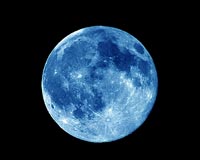 |
Sydney, Australia (SPX) Mar 9, 2011 China's Chang'e-2 lunar orbiter has spent most of its mission in relative obscurity. This mission lacks the historical significance of Chang'e-1, which was China's first mission to the Moon. It has also not performed anything substantially different from its predecessor, such as landing on the Moon. As the backup spacecraft for Chang'e-1, Chang'e-2 has been tasked with taking a closer look at some parts of the Moon that are potential landing sites for Chinese spacecraft. It has also flown a different trajectory to the Moon and entered a lower orbit. Chang'e-2 seems to have performed well on its mission, and we have seen some nice high-resolution pictures from early in its mission. But what's next? The spacecraft was launched at the beginning of October 2010. China stated that Chang'e-2 would have a primary mission of around six months. After that, its fate had not been determined. The spacecraft was expected to be fairly well-stocked on fuel and still functional. This led to talk of possible new missions for the spacecraft, such as flying back to Earth, or heading into deep space. As we draw closer to the nominated end of the primary mission, it's worth revisiting these questions. China has been quiet about the overall mission in recent months, and has offered no recent comments on its secondary mission. But talk of such plans must surely be active behind closed doors. It seems reasonable to expect that Chang'e-2 is as healthy as its controllers originally expected. Its identical twin performed very well on its own mission, and controllers are flying this spacecraft with all of the experience of the previous flight. Something must be planned. The lack of dialogue leads this author to speculate on the most likely fate of Chang'e-2. The mission will simply continue to orbit the Moon in a fashion not much different from its primary mission, and will be used to examine more locations with high-resolution imagery. The spacecraft's laser altimeter can also be used to study the surface in greater detail, providing more clues to the topography. It makes sense to do this. The more sites China studies in detail, the more options it has for the next phase of its lunar exploration program. China had stated that it plans to send a rover to the Moon's surface, and also stage a sample return mission, which supported a general view that there would be two landers in the future. Last year, this author disclosed in Space Daily that China apparently had plans for four separate landing missions this decade, based on information published on a Chinese Web site (Four Chinese Lunar Landers Mooted, Space Daily October 6 2010). There will be two landers bearing rovers, and two sample-return missions. With so many flights, there's a clear need for choice. There's another good reason for China to keep Chang'e-2 at the Moon. There will probably be no more Chinese orbiters for several years. It's expected that the landers will spend some time orbiting the Moon before they descend to the surface, but this will not last long, and the landers will probably not conduct any scientific observations from orbit. With Chang'e-2 at the Moon, China can also conduct solar physics studies. Recent science headlines have warned us that the Sun is becoming active again, as we head toward another "solar maximum", or peak in the Sun's activity cycle. Monitoring this from lunar orbit, as well as from satellites in Earth orbit, will be interesting. It is unclear if Chang'e-2 can sustain its orbit or remain functional for too much longer, but it could have a chance to catch a few major flares in the months ahead. China may also want to send Chang'e-2 to a controlled impact with the lunar surface. This was done with the Chang'e-1 mission at the end of its operational lifetime. This would give China more experience with navigating and tracking a spacecraft at a very low lunar altitude, which further sharpens their skills for a landing. We should know what is happening in the weeks ahead. Staying at the Moon would not be such a bad choice. Dr Morris Jones is an Australian space analyst and writer. Email morrisjonesNOSPAMhotmail.com. Replace NOSPAM with @ to send email.
Share This Article With Planet Earth
Related Links the missing link The Chinese Space Program - News, Policy and Technology China News from SinoDaily.com
 China Expects To Launch Fifth Lunar Probe Chang'e-5 In 2017
China Expects To Launch Fifth Lunar Probe Chang'e-5 In 2017Beijing, China (XNA) Mar 04, 2011 China is expected to launch its fifth lunar probe, Chang'e-5, in 2017 to send back a moon rock sample to earth, a top Chinese space scientist told Xinhua Wednesday. A lunar landing probe, lunar surface patrol device and other equipment would be carried by Chang'e-5, said Ye Peijian, chief designer of Chang'e-1, the country's first moon probe, and chief commander of the Chang'e-2 and Chang' ... read more |
|
| The content herein, unless otherwise known to be public domain, are Copyright 1995-2010 - SpaceDaily. AFP and UPI Wire Stories are copyright Agence France-Presse and United Press International. ESA Portal Reports are copyright European Space Agency. All NASA sourced material is public domain. Additional copyrights may apply in whole or part to other bona fide parties. Advertising does not imply endorsement,agreement or approval of any opinions, statements or information provided by SpaceDaily on any Web page published or hosted by SpaceDaily. Privacy Statement |